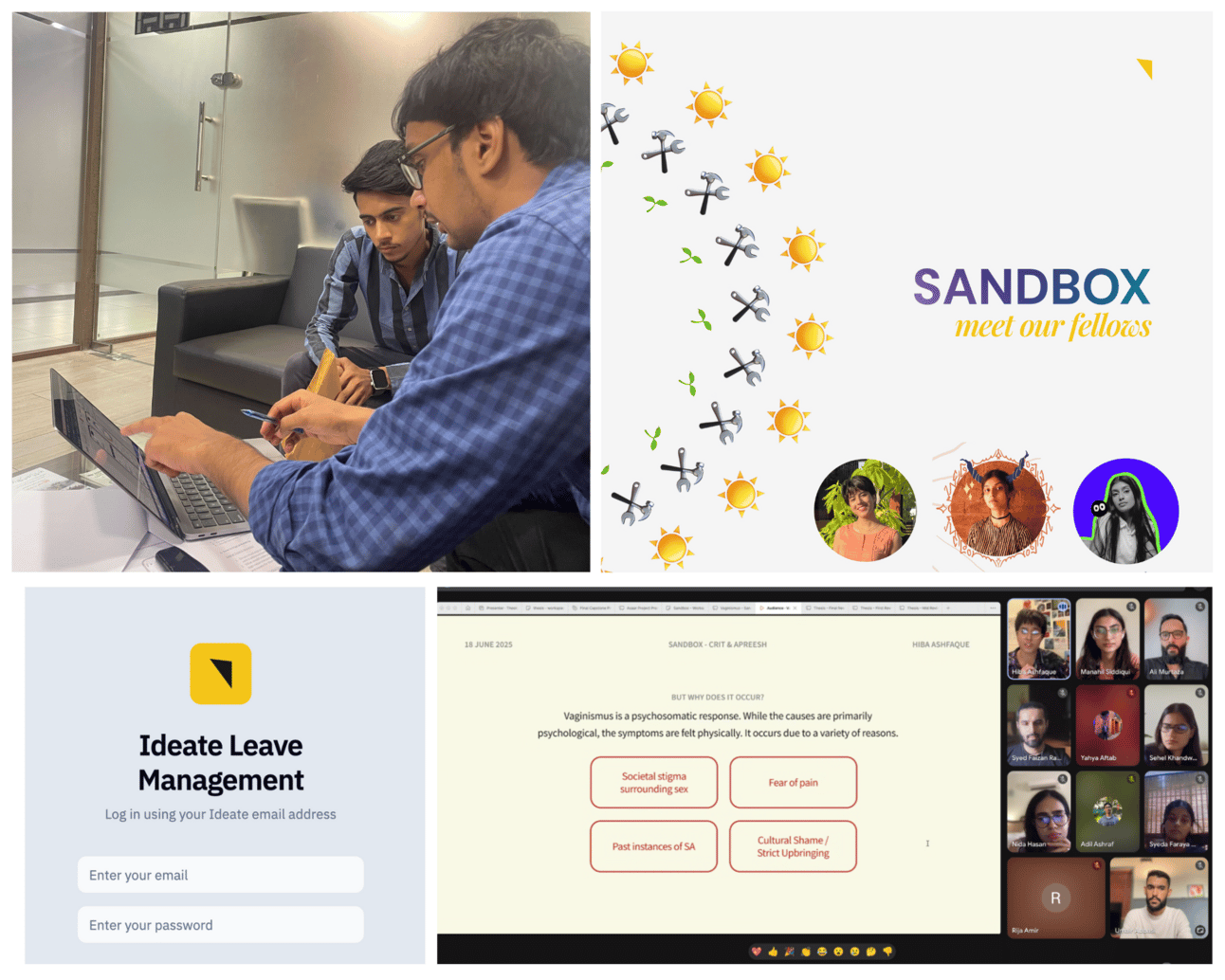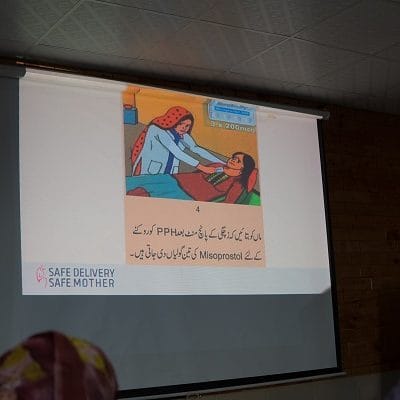- The Journey Map
- Posts
- Designing for Health, Equity & Everyday Impact
Designing for Health, Equity & Everyday Impact
Join us on our journey to building a more equitable world.

This month, we explored trust in public banking through fieldwork with NBP, welcomed new team members and fellows, and built internal systems to support our growing studio. We also spotlighted our past work on responsible contraceptive uptake with Ipas and highlighted a bold maternal health initiative from Safe Delivery, Safe Mother. Let’s dive in! 🚀
🗓️ This Month at Ideate
Bridging the Gap Between Branch and App: We hit the field with the National Bank of Pakistan, conducting intercept interviews with walk-in customers to understand why many still prefer branch visits over using the app. As a government bank, NBP holds a unique place in users’ minds—making it essential to explore how perceptions of trust, credibility, and innovation influence their channel choices.
Welcoming New Faces & Fresh Perspectives: June brought fresh energy to the team! We welcomed Masna Bin Umeed as our new UX Design Lead, and our Sandbox Summer Fellows joined us and kicked off their research on design challenges in Global South contexts. Meanwhile, our Brand & Visual Lead Umair Abbasi headed to Beaconhouse National University in Lahore to join design juries and share feedback with design students.
Designing Better Internal Systems: We believe good design starts at home. This month, we designed and launched a custom-built leave management portal using Lovable—crafted through team discussions, iterative testing, and a lot of care. It’s a small but meaningful way we’re supporting our team and making day-to-day processes more intuitive and stress-free.
Aligning with the Bigger Picture: We attended the Karandaaz Financial Inclusion Survey (K-FIS) 2024 Launch, focusing on financial inclusion in Pakistan over the past decade. The conversation focused on who has gained access, where the most persistent gaps remain—especially among women and low-income users—and what the future of true inclusion should look like. Much of what was shared resonated deeply with our own fieldwork, validating qualitative insights we’ve gathered on trust, behavior, and barriers to digital financial services.

🔎 Project Spotlight
Designing for Responsible Contraceptive Uptake in Rural Pakistan
In rural Pakistan, access to post-abortive care and contraceptive counseling remains limited—despite a global rise in unsupervised medical abortion. To address this, Ipas partnered with us to design interventions that could support women’s reproductive health and increase contraceptive uptake in underserved areas through context-aware, user-centered interventions.
We began by facilitating co-design workshops with diverse stakeholders to map challenges and co-create ideas. From there, we developed a series of prototype concepts—ranging from digital tools to service-based interventions—placed at critical touchpoints like pharmacies, local healthcare providers, and even women’s homes. These were then tested with users to understand their comfort levels and openness to different modes of contraceptive counseling.
The result? A set of validated pathways that aim to make post-abortive care more accessible, trusted, and responsive to the lived realities of rural women—supporting not only their health, but also their autonomy.
If you're working on solutions to improve reproductive health access or design interventions for underserved communities, reach out to [email protected]—we’d love to collaborate!
Ready to discover our work? View our website here.

🍪 Bite-sized Insights
Co-Designing for Reproductive Health: In our work with Ipas, we grounded every intervention in the lived experiences of rural women. From limited mobility to privacy concerns, we designed around real-world constraints—bringing information and support to the spaces women already access, like pharmacies and homes. By prototyping with users at these touchpoints, we ensured that each solution met them where they are—practically, socially, and emotionally.
Bridging Access Gaps in Global Health: According to the Guttmacher Institute, nearly 60% of unintended pregnancies globally end in abortion, yet access to post-abortive care and contraception remains a systemic challenge—especially in low-resource settings. Solutions that integrate service design and community-based delivery models are proving essential in bridging this gap.¹
🍿 This Month’s Top Picks
📖 Reading: Design Justice by Sasha Costanza-Chock
📺 Watching: The Human Face of Big Data (2016)
📻 Listening to: The Service Design Show
📣 Community Shoutouts
Safe Births Begin with Empowered Communities
We’re spotlighting Safe Delivery, Safe Mother—an initiative committed to making childbirth safer for women in low-resource settings. Their platform connects underserved communities with life-saving information on maternal health, while also supporting frontline healthcare workers with tools and training to manage birth complications.
Through strengthening health systems, improving data practices, and addressing socio-economic barriers through community engagement, Safe Delivery, Safe Mother is creating a foundation for long-term change. Their vision? A national-scale effort to reach Pakistan’s most underserved rural areas with life-saving maternal care.
Learn more and follow their journey: safedeliverysafemother.com 🤍

📮 Let’s Work Together
At Ideate, collaboration isn’t just a value—it’s at the heart of everything we do. Whether you’re looking to collaborate or want to explore how human-centered design can help your work, we’re all ears. Let’s brainstorm together:
Ali Murtaza, Partner & Chief Design Officer– [email protected]